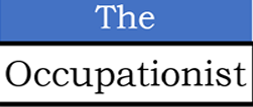Do not be amused at the sight of a co-worker falling asleep during a meeting. If you notice the same worker falling asleep multiple times during the same meeting or in every meeting, it is time to alert the OH physician.
The sleep disorder is bad news for the worker (performance issues, accidents etc.) as well as the organization (safety incidents, sometimes catastrophic). However, awareness and timely help can avert these.
Sleep disorders should be considered when undertaking health surveillance of workers employed in certain occupations where activities could be dangerous to the individual and others. These include workers in critical operations (nuclear reactors), pilots, air-traffic controllers, long-distance vehicle drivers etc.
The OH physician contributes to safety and performance of employees in dangerous occupations by considering difficulties in sustained alertness while undertaking health surveillance.
If found to be at a high risk of reduced alertness, such a worker should temporarily be suspended from work until they begin to respond to treatment and are certified fit by a physician.
The role of Occupational Health physician in managing sleep disorders in dangerous occupations are 3-fold:
- creating awareness,
- conducting health surveillance,
- facilitating return to work of the affected worker.
What is this sleep disorder where an employee falls asleep during meetings? Called sleep apnoea, it is a condition where breathing stops for a while during sleep; the most common being Obstructive Sleep Apnoea (OSA).
People with OSA experience episodes of snoring that begins soon after falling asleep. The snoring is eventually interrupted by a long silent period without any breathing (apnoea).
OSA affects individual’s work performance. Sleep deprivation reduces innovative thinking and decision-making abilities. It impairs ability to make flexible decisions or quick rational judgements during an unforeseen crisis.
Sleep deprived people fail to recall facts quickly, and are less articulate, especially when vocalising thoughts. They also have problems finding the right words and delivering ideas.
Sleep loss leads to tiredness and fatigue which impacts communication skills and impairs working in teams’ due to short tempers that many times damage working relationships.
Research has found that in major disasters such as the Exxon Valdez oil spill in 1989, was due to long working hours, coupled with a disturbed sleep pattern that contributed to a decision-making error.
Increasing age, overweight and those having short, thick necks are prone to OSA. Also prone are those with structural narrowing of the upper airways or a receding jaw.
OSA begins initially with headaches in the morning, poor physical and intellectual performance, and an agitated mind.
Diagnosis of OSA is by a respiratory physician for a sleep study where detailed overnight recordings are made of abnormal breathing, respiratory effort, oxygen in the blood etc.
If overnight in a sleep lab is not feasible, Epworth Sleepiness Scale (ESS) is advised by the respiratory physician.
Treatment of OSA is planned by the respiratory physician considering medical history, physical examination, and lab results. Patients benefit by reducing weight, stopping of smoking, cutting down of alcohol and avoiding sedatives.
In an organization having dangerous operations, one of the ways by which the Occupational Health physicians can contribute in preventing accidents and improving employee performance is by:
- conducting health surveillance (by considering difficulties in sustained alertness),
- educating the workforce about signs and symptoms of sleep apnoea,
- encouraging employees to have a healthy lifestyle,
- advising to seek timely medical advice in case of sleep-related issues to prevent accidents and improve personal performance,
- facilitating return to work of the employee after treatment.
Individuals, MSMEs or large corporations may contact



